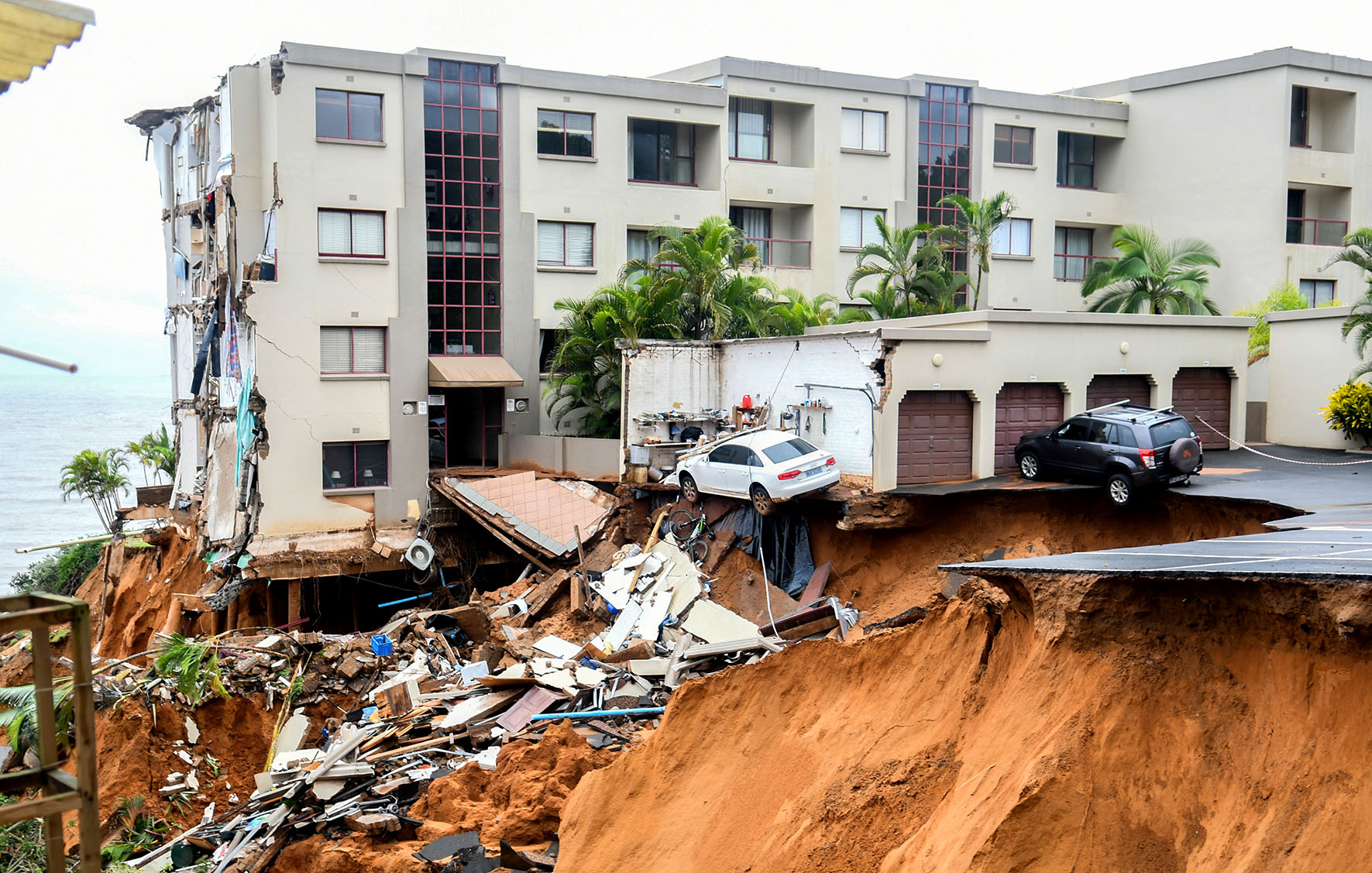Cast your mind back to April 2022 and the floods in KwaZulu-Natal. Infrastructure, homes and businesses buckled under severe floodwaters that caused billions of rands in damage and hundreds of deaths.
Devastating flood damage at Toyota’s manufacturing and assembly plant in Durban halted vehicle production there for four months.
/file/dailymaverick/wp-content/uploads/2022/12/GettyImages-1242552828.jpg)
In the aftermath, Toyota South Africa Motors’ (TSAM’s) insurer, Tokio Marine & Nichido Fire Insurance, paid out — and then turned its attention to those it holds responsible.
The Japanese insurer is now attempting to recoup a collective R6.5-billion from the eThekwini Municipality, the KZN Department of Transport and Transnet. It is claiming negligence, specifically the failure to maintain flood prevention infrastructure.
“It is important to note that the litigation proceedings are not being facilitated and/or funded by TSAM,” said Tasneem Lorgat, the general manager of marketing communications at TSAM.
“Accordingly, TSAM will not benefit in any way from the subrogated recovery action against these entities.”
If successful, this case could change how insurers manage climate risk and who they hold accountable for damages related to climate change.
Insurers vs incompetence
As the climate warms and infrastructure decays, insurers like Tokio Marine seem no longer willing to act as underwriters of public incompetence. And who can blame them?
According to Atang Matebesi, the CEO of Santam Client Solutions, the insurer’s storm and flood claims in commercial lines have increased by 5% over the past year.
“Storm and flood damage is often exacerbated by inadequate infrastructure maintenance or poor town planning, resulting in higher-value claims regardless of no major catastrophe events occurred over the past year,” he said.
Read more: Insurance industry sounds the alarm over climate change-induced catastrophes
Santam’s latest Insurance Barometer shows that climate change has barged its way into the list of top 10 concerns for customers, with 78% of respondents worried about extreme weather.
/file/dailymaverick/wp-content/uploads/2022/04/DJI_0692.jpg)
Nearly a quarter of respondents said they were proactively cleaning gutters or upgrading infrastructure to mitigate risks, said Matebesi. He added, however, that Santam’s claims data tell another story: too little, too late.
Climate change is a balance sheet issue
Insurers aren’t alone in their shift from passive observer to active risk manager.
“Climate volatility has accelerated the case for investing in renewable energy and water infrastructure to enhance economic and environmental resilience,” said Thabang Selota, Environmental, Social and Governance (ESG) and impact analyst at Sanlam Investments.
The asset manager’s investments, including in Oya Energy and Alien Fuel Group, are designed to lower exposure to fossil fuel volatility and boost long-term sustainability.
Read more: How to protect your home from weather-related risks
Sanlam uses internal ESG scoring and aligns decisions with global standards like the Task Force on Climate-Related Financial Disclosure and the UN’s Principles for Responsible Investment, said Selota.
High-emission companies with no real decarbonisation plan are red-flagged.
“Climate-related risks have direct implications for investment values,” said Selota. “These risks have increasingly influenced how we assess infrastructure resilience and asset viability.”
Everyone’s problem, nobody’s job
In sectors like agriculture and logistics, the cost of inaction will hit a lot harder.
Selota points out that businesses with physical exposure to climate extremes — agriculture, logistics, infrastructure — are particularly vulnerable. Those without the capital to build adaptation buffers are the first to go under.
“[Climate change] impacts substantially on livestock and crop health and production, while damage to infrastructure from extreme weather events disrupts agricultural and food supply chains,” said Stellenbosch Business School research fellow Roscoe van Wyk.
Read more: Battling climate change: How smallholder farmers in KwaZulu-Natal are adapting to survive
There’s still a yawning gap between risk perception and preparedness. Santam’s data show that 64% of agribusinesses name climate change as a top concern.
Yet only 16% of corporates overall rank it in their top three risks.
Wear and tear on infrastructure and increased weather-related risks could influence the fine print of insurance policies, said Kirsten Wolmarans, a partner at Webber Wentzel.
“Insurers may soon require institutional policyholders to implement early warning systems as a condition for coverage,” she said, warning that infrastructure contracts should mandate such systems or risk facing litigation. DM




 Flats in Umdloti, KZN, on 22 May after the devastating floods in the province. (Photo: Darren Stewart / Gallo Images)
Flats in Umdloti, KZN, on 22 May after the devastating floods in the province. (Photo: Darren Stewart / Gallo Images)